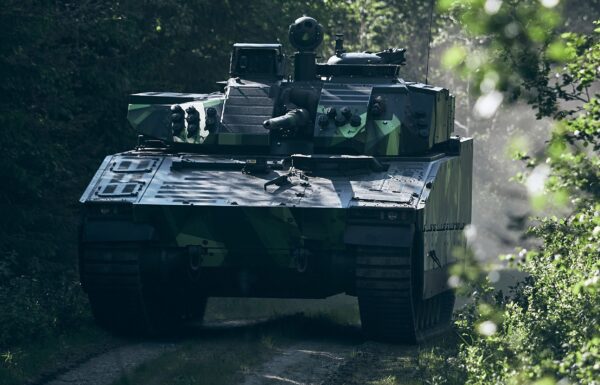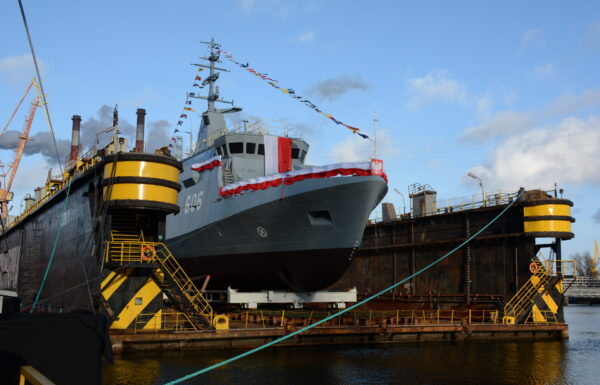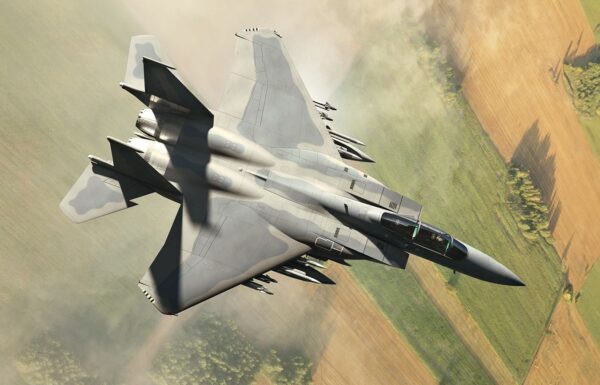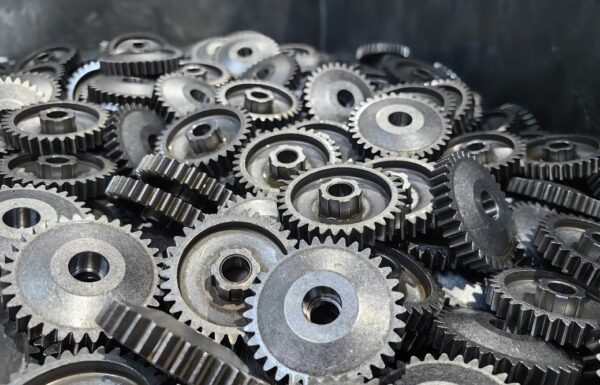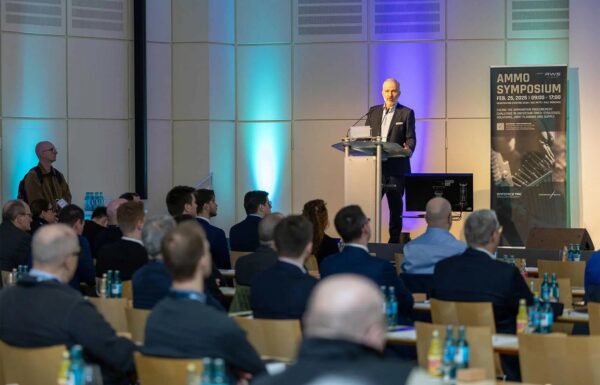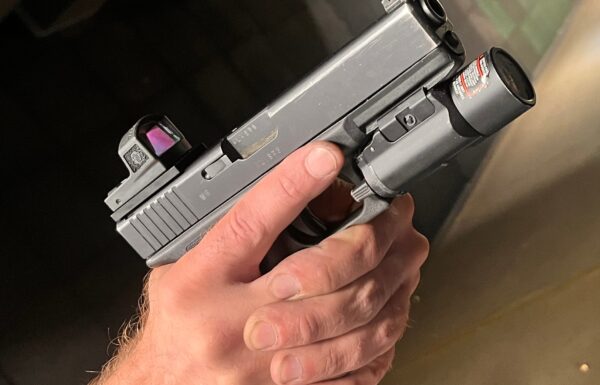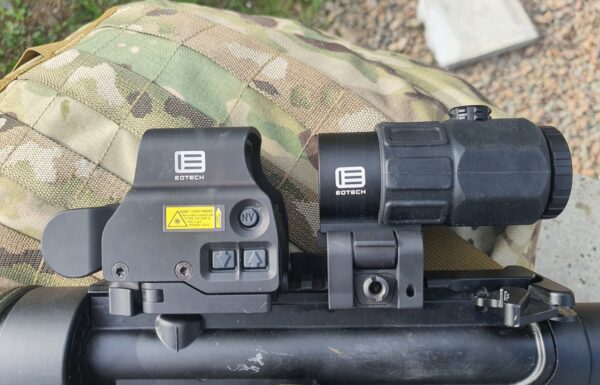The Korean company is proposing an accelerated delivery of three KSS-III Batch 2 submarines, along with an investment package for the Polish shipbuilding industry and R&D sector. Additionally, during the transitional period, the Koreans have pledged to lease an additional submarine, on which Polish crews would undergo training and maintain their operational skills.
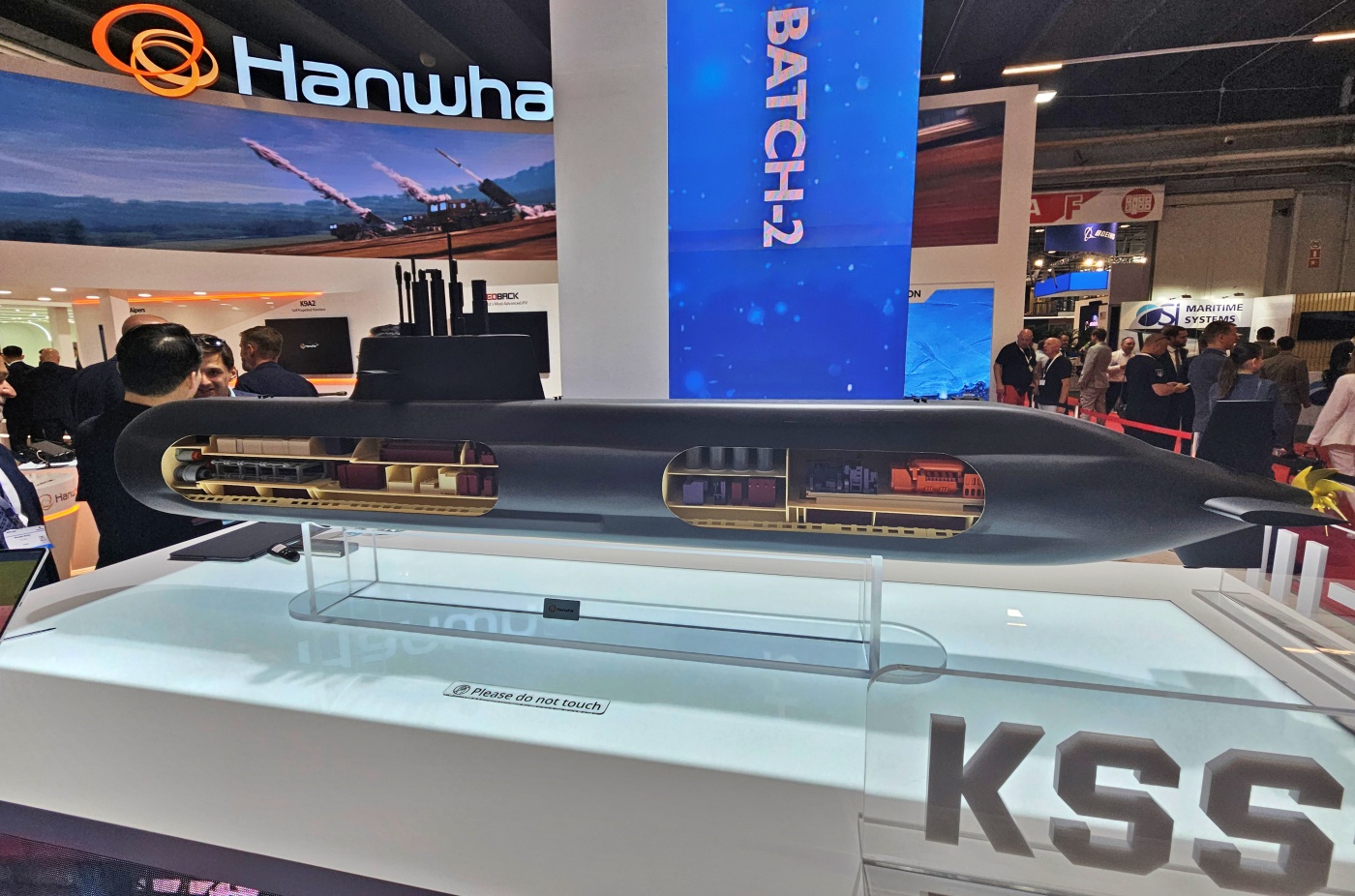 Model of KSS-III Batch 2 submarine presented at the MSPO 2024 trade fair / Photo: Jakub Link-Lenczowski, MILMAG
Model of KSS-III Batch 2 submarine presented at the MSPO 2024 trade fair / Photo: Jakub Link-Lenczowski, MILMAG
As emphasized by Hanwha Ocean representatives, the first of the ordered submarines could arrive in Poland within six years of the contract signing, while the entire program would be completed in just under 8.5 years. The plan would be supported by the leasing of a KSS-I/Jangbogo-class vessel (a design based on the German U-209 submarine), which, according to information obtained by the MILMAG editorial team, could be made available to Polish sailors around the year 2026.
To appeal to the Polish industry, Hanwha Ocean is proposing the establishment of an independent MRO (Maintenance, Repair & Overhaul) Support Center in Poland. This facility would provide full maintenance capabilities for the submarines—from routine inspections to major overhauls. The entire process would be overseen by Korean specialists.
Following this initiative, Hanwha Ocean has pledged to invest 100 million USD into the Polish shipbuilding sector. As part of this commitment, the Korean company aims to modernize infrastructure, train personnel, support R&D activities, and cooperate with Polish shipyards in the construction and servicing of civilian vessels. Additionally, the proposal includes a transfer of submarine-related know-how, enabling Polish suppliers to become part of Hanwha Ocean’s global supply network (South Korea: Development of KSS-IV submarines starting in 2028).
KSS-III Batch 2
The second-batch submarines will have a displacement of 3,600 tons (compared to 3,358 tons of the first batch) and will be highly automated, allowing them to be operated by a minimum crew of 33 officers and sailors (down from 50). The KSS-III Batch II will be equipped with a wide range of weaponry and will be capable of launching anti-ship missiles, land-attack missiles, 533.4 mm K744 Baek Sang Eo heavy torpedoes, and deploying naval mines. The submarine will feature a hull design that minimizes noise for stealthy underwater operations, an air-independent propulsion (AIP) system based on fuel cells, and state-of-the-art lithium-ion batteries, enabling it to remain submerged for more than three weeks without surfacing. As noted, the submarine will also have long-range strike capability, able to launch both conventional submarine-launched ballistic missiles and cruise missiles—significantly enhancing its deterrence potential.
Additionally, the KSS-III is equipped with advanced integrated combat management and sonar systems, as well as communication systems and an allied Link data network, ensuring interoperability with partner nations. The KSS-III is designed with multi-mission capabilities in mind, and its modular construction allows for the adaptation of onboard equipment to suit specific missions, such as reconnaissance.



